If you can not decide whether your pet needs an operation such as castration or sterilization, doubt the pros and cons of the procedure, and you are afraid of complications, in this article you will find answers to your questions.
Contents
- Is it necessary to castrate a cat?
- Methods of castration of cats
- Preparation of a cat in castration
- How does the cat behave after castration?
- Complications after castration of cat
- Does the cat have sterilization?
- Methods for sterilizing a cat
- How to prepare a cat for sterilization?
- How does the cat behave after sterilization?
- Complications after cat sterilization
- Video: Castration and sterilization, advice vetrinara
You want to have a pet - cat or cat, or have already done it. Then the question of castration or sterilization of an animal will necessarily arise before you. Such procedures are designed not only to facilitate the life of the host and prevent unwanted offspring, but also have medical indications.
Is it necessary to castrate a cat?
- Castration is a surgical operation in which the gonads of the animal are removed. Usually the procedure is performed at the age of 8-12 months, because it is during this period that puberty of
- is completed. It is desirable to determine the need for the procedure as early as possible - until the first mating. Not the best solution is to several times reduce the animal, and then resort to castration
- The operation itself is not complicated and does not threaten the health of the cat. Possible risks are related only to the need for anesthesia
Arguing for castration:
- Cat will not scream at night, show signs of anxiety, "tag"
- Animal will not experience physical discomfort, suffering from lack of sexual contact
- After the procedure, the character significantly improvesand the behavior of your pet - it becomes playful or more calm, does not show signs of aggression
- Castration of a cat is considered an effective prophylaxis of prostate adenoma, prostatitis,tumor formations of the genitals
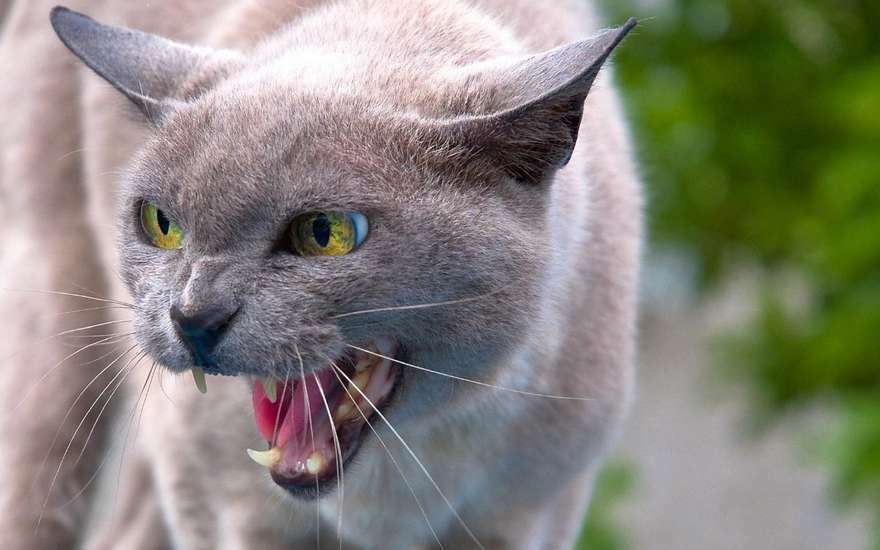 Aggressive behavior of the cat as one of the causes of castration
Aggressive behavior of the cat as one of the causes of castration Negative moments:
- The operation is performed under local or complete anesthesia. Obligatory checking of the cardiac activity of the animal and collection of necessary tests are mandatory. The dose of anesthesia should be selected by the doctor individually. The withdrawal from anesthesia can also be very painful.
- The following are possible health problems for your pet: malnutrition can lead to the development of urolithiasis and obesity
Methods of castration of cats
There are following methods of surgical intervention during castration:
- The traditional option is when during operationthe removal of testes is performed.
- An analogue of male sterilization is the dressing of the seminal ducts, i.e.the animal becomes barren. In this case, all sexual functions, as well as related problems of behavior and health remain. Therefore, in 99% of cases the owners of cats prefer the traditional method of castration
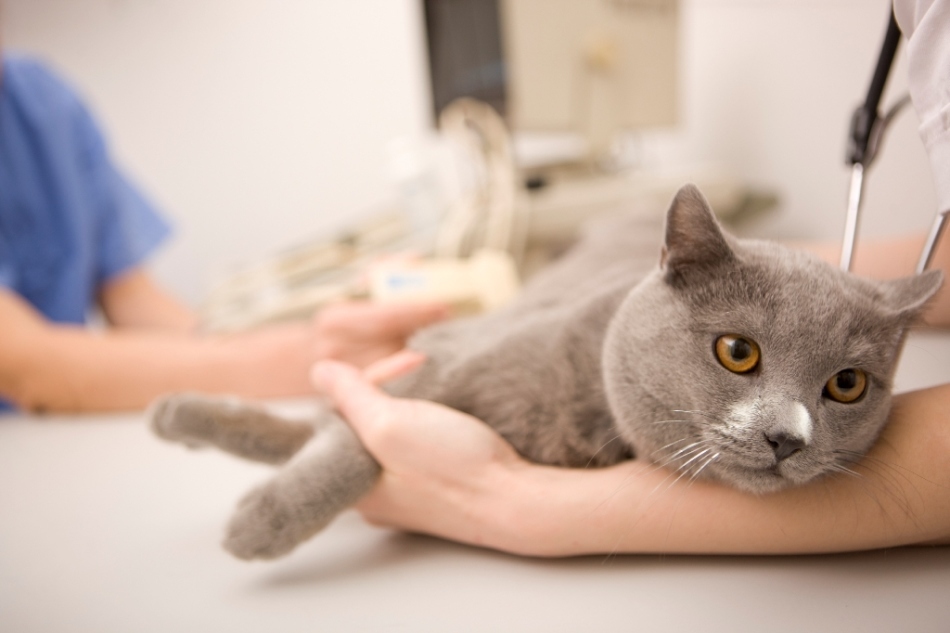 Consultation in a veterinary clinic before castration of a cat
Consultation in a veterinary clinic before castration of a cat Preparation of a cat in castration
- The main condition for conducting a successful operation is choosing a good specialist and having no health problems with your pet. The procedure can be performed in a veterinary clinic or at your request at home.
- The hospital environment, of course, can scare the animal. Some cats and cats are under severe stress, falling into unfamiliar surroundings. In addition, an operation at home will avoid possible infection with viral diseases if the animal is not vaccinated. On the other hand, in case of any complications in the clinic, your pet will be provided with timely qualified help.
- Usually, before the castration, the following examinations are scheduled: ECHO of the heart, blood and urine tests. If the analysis data is satisfactory, you can determine the date of the operation. Please note that after the procedure, the cat should be under at least 2 days under the supervision of an adult
- . Do not feed the cat in the 12-hour period before the operation - it is necessary that the stomach and intestines are empty. Otherwise during the procedure, vomiting may start, which will worsen the condition of the animal.3 hours before castration, do not give water to the cat.
- Take with you to the clinic the documents - the owner's passport, the veterinary passport of the animal, the warm plaid and the open-top bag for carrying
- . After the procedure, listen to the doctor's advice on care, nutrition and possible signs of complications in whichit is necessary to apply to the
- clinic. If the operation was performed under general anesthesia, it is advisable to leave the animal in the clinic under the supervision of the doctor for 24 hours. At your request, you can immediately take the pet home
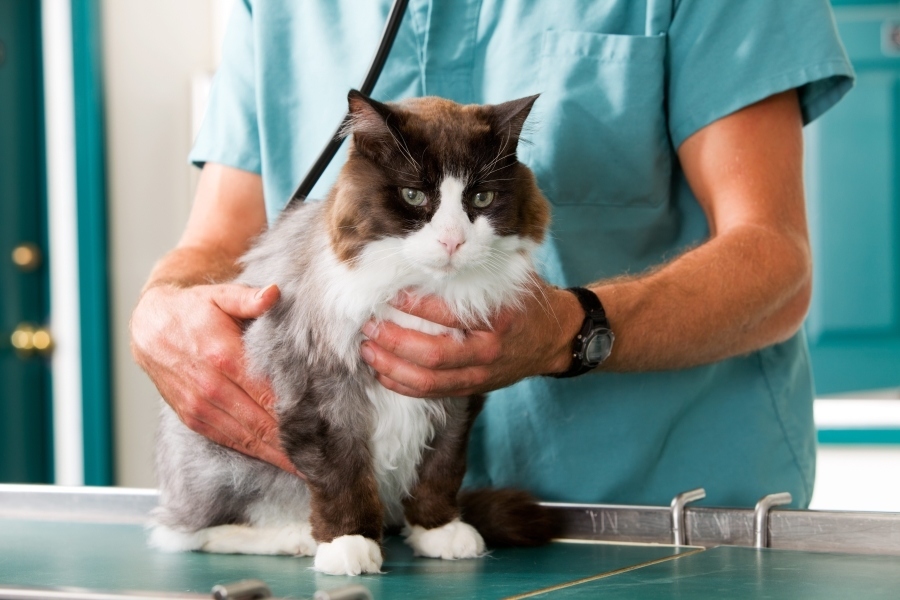 Conduct an animal's examination before castration to avoid the risk of complications
Conduct an animal's examination before castration to avoid the risk of complications How does the cat behave after castration?
- After a general anesthesia your pet will sleep for a while. Some animals can wake up after 30-40 minutes, others - only in 3-4 hours. It depends on the organism of the pet, the dose and the type of anesthetic medicine
- At home, lay the cat on a soft litter on the floor. Periodically check the condition of the animal - touch the nose, ears, paws. If your pet reacts to a touch, then everything is in order. Waking up, the animal will be trapped in movements, possibly a disruption in coordination - a stumbling gait, dangling head. The animal can try to hide or aimlessly wander around the apartment - these are the consequences of the experienced stress
- As soon as the cat wakes up, moisten the larynx - pour in a teaspoon of boiled water, you can use a pipette or syringe for this. Do not allow him to drink from the bowl until it completely comes to life - after general anesthesia the swallowing reflexes of the animal are violated and the fluid can get into the respiratory tract
- . The first feeding is allowed only 7-8 hours after complete withdrawal from the state of anesthesia. Food should be light, puree, in small portions
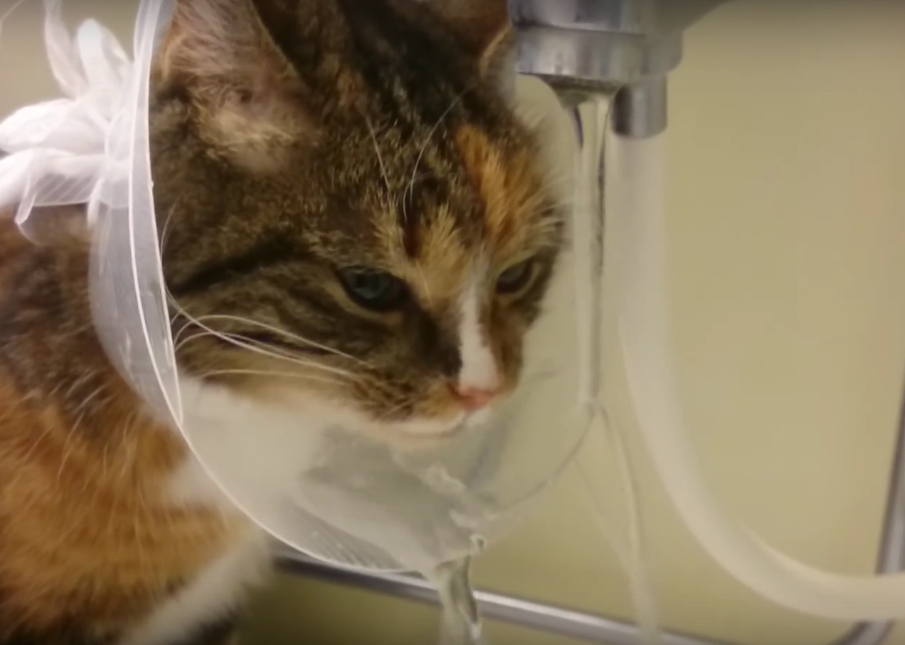 Special collar after castration to protect the incision from infection
Special collar after castration to protect the incision from infection Complications after castration of cat
- If local anesthesia was used during the operation, you should only treat the incision with the prescribed disinfectant and pay attention to thorough cleaningtoilet tray in order to avoid getting into the wound infection
- A special collar is required if the cat suffers from infectious diseases of the oral cavity orcom frequently and carefully licks the wound
- After general anesthesia the animal care beyond that includes closely monitoring his condition during the first day. Sometimes the reaction of the body to general anesthesia occurs several hours after the end of the operation.
. Immediately contact the clinic if you notice any alarming symptoms:
- swelling of the lips, tongue, eyelid
- blushing or severe redness of the mucous
- breathing difficulty
- body temperature rise
- heartbeat failures
Failurefrom the feed in the first 2 - 3 days after castration is not a serious cause for concern. This behavior is typical for animals that survived a stressful situation. Consult with your doctor to prescribe sedatives and sedatives.
 High temperature after castration - signal for immediate medical attention
High temperature after castration - signal for immediate medical attention Does the cat need sterilization?
- Sterilization of cats is carried out for the same reasons as castration of cats. The animal experiences constant discomfort from an unsatisfied sexual instinct, and you do not need problems arising when it's time to attach the kittens to "good hands"
- This operation is recommended for cats at the age of 7-8 months. Earlier sterilization is dangerous complications and can affect the growth and development of the animal. Late periods may result in a risk of negative consequences of anesthesia and a decrease in the effectiveness of the procedure
- There is a misconception that a cat should give birth at least once before carrying out the sterilization. In fact, in the nulliparous animal hormones, estrogens, which cause sexual behavior, are produced only in the ovaries. After birth, these hormones begin to be produced by other endocrine glands, so the animal will lose genital functions, but will feel a constant concern, may be aggressive
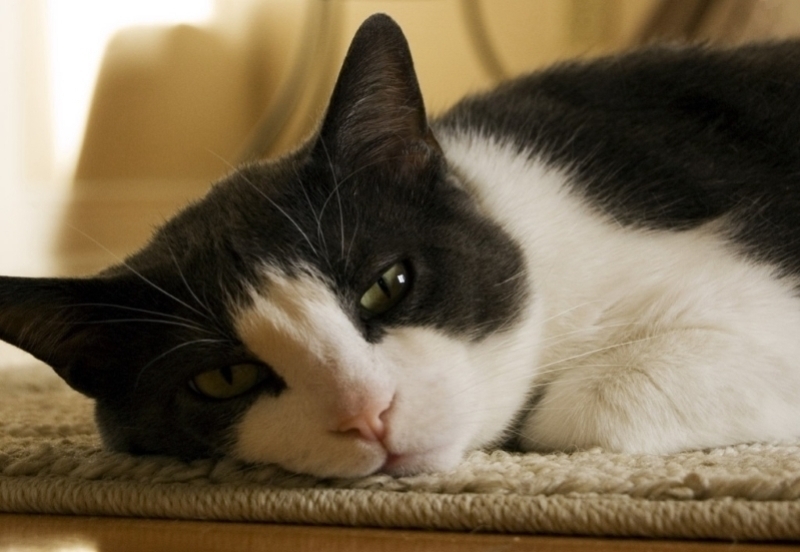 Sterilization of the cat will protect the animal from unwanted pregnancy and genital diseases
Sterilization of the cat will protect the animal from unwanted pregnancy and genital diseases Methods of sterilizing the cat
There are 2 types of sterilization:
- Ovariohysterectomy includes surgical removal of all the reproductive organs of the animal
- Ovariectomy - removal of the ovaries with complete preservationResearch Institute of the uterus. The blood supply of this organ is not disturbed, therefore subsequently atrophy of tissues is not observed. At the same time there is a risk of developing uterine diseases - inflammatory processes and tumors of various etiologies
Based on these reasons, doctors recommend a second method of sterilization.
How to prepare a cat for sterilization?
- It is recommended to plant the cat at least 30-40 days before sterilization. Then the risk of acquiring a viral infection while in the clinic will be minimal. Anesthesia used during the operation can reduce the immune defense of the body, which for the unvaccinated animal will result in additional complications.
- Pass the necessary examination of the heart, pass urine and blood tests.
- . The same recommendations as above were given before surgery - 12-hour diet and banliquid during the last 3 hours before the
- procedure. Such measures are associated with the effect of anesthetic substances on the animal's body. The combination of tiletamine and xylazine has a side effect in the form of vomiting. This can cause a serious complication during the operation, therefore, the necessity of fasting before the procedure should be taken responsibly
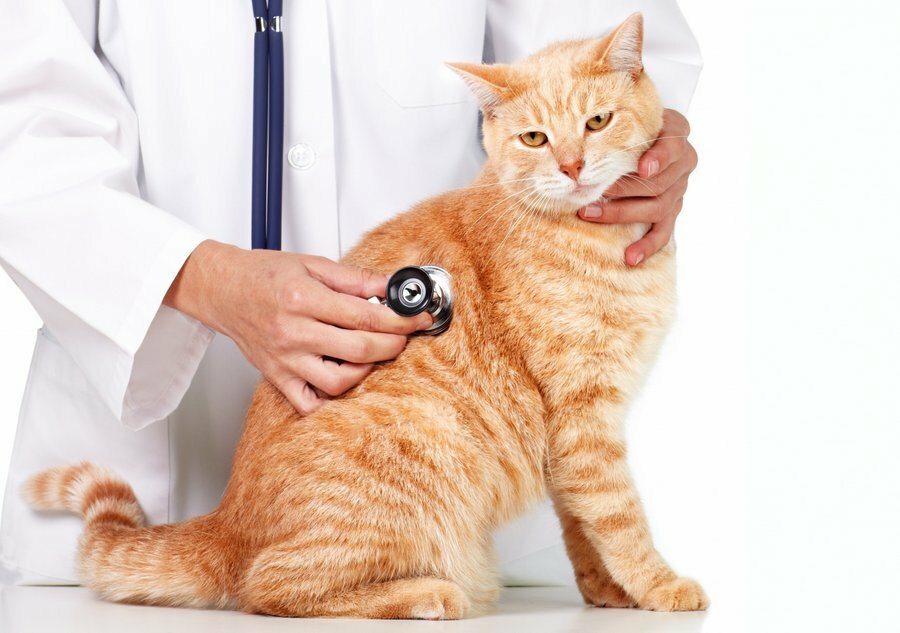 Obligatory consultation and examination in the veterinary clinic before sterilization
Obligatory consultation and examination in the veterinary clinic before sterilization How does the cat behave after sterilization?
- The operation is usually performed under general anesthesia. Some clinics offer a service for finding the animal for 7-10 days in a hospital under full supervision of
- . If you decided to take the animal home immediately after the procedure, prepare a comfortable comfortable place in advance, preferably in the warmth, preferably without direct sunlight. Sharp light can cause irritation of the eye cornea, causing fear and anxiety of your pet
- Observe the condition of the cat before the anesthesia ceases. The behavior of the animal at the moment of awakening can look like a reel, pawing paws, a dull look, a trembling of the head. Try to protect the space and prevent injury to the animal during the disorientation period after anesthesia
- After the operation in the veterinary clinic, a special bandage is put on the cat to prevent dirt and damage to the joints. This "clothing" usually does not cause concern to the animal
- To avoid complications after the operation, antibacterial therapy is prescribed. Usually used antibiotic prolonged action in the number of 2 injections with an interval of 48 hours. The first injection is done in the clinic immediately after the end of the operation. The second can be made by the owner independently, or for carrying out the procedure the animal needs to be brought to the veterinary clinic
- . Within 1-1,5 weeks after sterilization it is necessary to check the condition of the skin joints. The stitches must remain clean and dry. If you notice redness, wetness or suppuration of the joints, consult a doctor immediately. A slight swelling in the area of the incision is permissible. Seam care consists in the daily wiping of the site with a 0.05% chlorhexidine solution
- Usually, the seams are removed 8-10 days after sterilization if no absorbable materials were used.
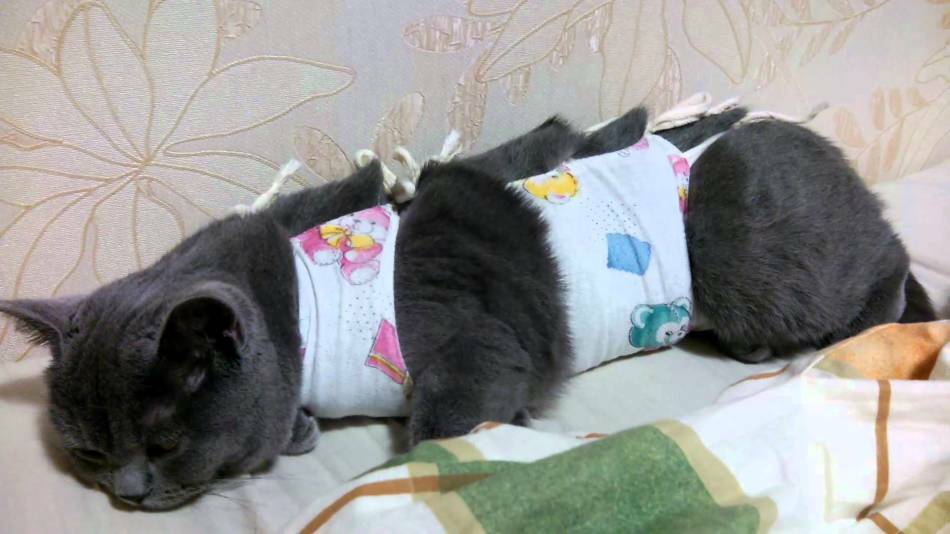 Special bandage is used to protect the joints after sterilization
Special bandage is used to protect the joints after sterilization Complications after cat sterilization
- Postoperativehernia - the formation of a seal in the form of cones on the stomach or side of the animal. The appearance of a hernia is caused by the divergence of the internal seam, and the external seam can be undamaged, the symptoms of inflammation are not observed.
- . The causes of the appearance of the hernia may be incorrect suturing, too active behavior of the cat during the postoperative period, damage to the bandage. If you notice such an education in your pet, you should immediately contact the veterinary clinic for surgical removal of the hernia
- Refusal of food and food - during the first 2 to 3 days after sterilization should not cause excitement. If the animal continues to starve, you should consult a doctor
 Inflammation of the mammary glands is one of the complications after sterilizing a cat
Inflammation of the mammary glands is one of the complications after sterilizing a cat Dangerous symptoms requiring immediate treatment:
- Breast swelling - an increase in size and soreness can be caused by the action of hormones. Such a condition sometimes passes on its own, but is dangerous for the risk of developing mastopathy.
- A rise in body temperature - may indicate the development of an inflammatory process in the body. It is not recommended to bring the temperature down
- Constipation - after a cavitary operation it is a frequent occurrence and can cause quite strong pains. Do not give the cat a laxative without consulting a doctor, since there is a risk of incorrectly calculating the dose of the drug. More effective and safe way will be an enema and further adherence to the special diet
